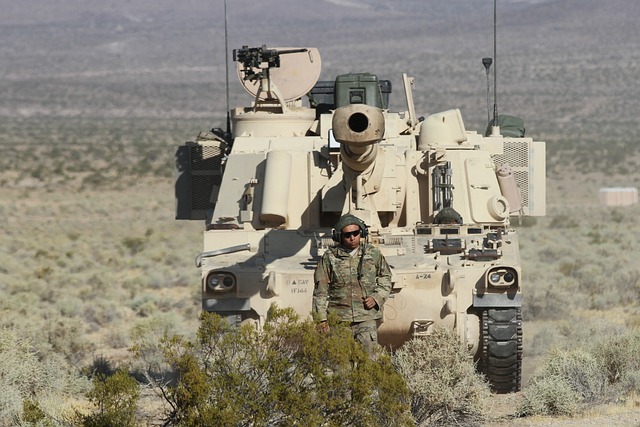
The US Army National Guard Flag is a multifaceted symbol that represents the organization's dual role as a state defense entity and a federal military force. Its design features a green background with an emblem that includes a shield, an eagle holding both arrows and an olive branch, and stars, all of which signify the guard's versatility in defense and peacekeeping, as well as its alignment with the U.S. Army National Guard's values of loyalty, duty, respect, honor, and selfless service. The flag's color scheme—red, white, and blue—mirrors that of the American flag, symbolizing unity, resilience, and the cohesion of diverse states under a single national identity. It also serves as a testament to the guard's commitment to safeguarding America's liberties and security, its role in responding to natural and humanitarian crises, and its preparedness for combat missions when necessary. The flag stands as an enduring representation of the National Guard's historical significance and ongoing dedication to the nation's defense infrastructure and the values it upholds.
The US Army National Guard Flag, a potent symbol of service and commitment, unfurls with the bold strokes of red, white, and blue. This article delves into the profound significance of these colors, exploring their rich heritage and the unity they represent within American society. From the emblem’s design to its historical roots, we will unravel the cultural importance embedded in this iconic representation of resilience and solidarity. Join us as we salute the US Army National Guard Flag and understand how it stands as a beacon of American values and identity.
- Exploring the Symbolism of the US Army National Guard Flag's Red, White, and Blue Colors
- The Design and Cultural Significance of the US Army National Guard Emblem
- Historical Context and Evolution of the Red, White, and Blue in Military Iconography
- How the US Army National Guard Flag Represents Unity and Resilience in American Society
Exploring the Symbolism of the US Army National Guard Flag's Red, White, and Blue Colors

The red, white, and blue colors of the U.S. Army National Guard flag carry a rich tapestry of symbolism deeply rooted in American history and values. The use of red signifies valor and bravery, qualities that are paramount to the service members who don the uniform of the National Guard. It is a color that reflects the passion and determination with which these soldiers defend their communities and country. The white within the flag represents purity and innocence, embodying the ideals of justice and righteousness for which the guard stands. This hue also signifies unity, reflecting the collective purpose and shared commitment of the National Guard to serve and protect the nation. The blue, a color present in both the field of the flag and the star emblem, represents vigilance, responsibility, and the ever-vigilant eye of justice. It is a reminder of the guard’s eternal watchfulness over the American homeland, its institutions, and its citizens. Each color serves as a visual representation of the core principles and historical legacy that define the U.S. Army National Guard. The flag, with its red, white, and blue, thus becomes a potent symbol of the guard’s unwavering commitment to duty, country, and the enduring American spirit it embodies.
The Design and Cultural Significance of the US Army National Guard Emblem

The emblem of the United States Army National Guard is a symbol steeped in history and tradition, reflecting the guard’s unique role as a link between federal military forces and state defense. At its core, the design incorporates a shield, eagle, and stars, all set against a backdrop that includes the storied green of American military heritage. The emblem’s central feature is an eagle clutching arrows in one talon and an olive branch in the other, symbolizing the guard’s readiness for both defense and peacekeeping operations. Adorning the shield are stars and stripes that pay homage to the flag of the United States Army National Guard, known as the “National Flag of the Army of the United States” or the “US Army National Guard Flag.” This flag, which mirrors the design of the American flag with its red white and blue colors, is a powerful emblem of the guard’s commitment to the nation. The cultural significance of this emblem extends beyond its visual appeal; it represents the guard’s dedication to protecting the liberties and security of the United States, as well as its deep roots in American civic life. It serves as a daily reminder of the values and traditions that the National Guard upholds, including loyalty, duty, respect, honor, and selfless service. As an integral part of the nation’s defense system, the emblem is a testament to the guard’s readiness to respond to both natural and man-made disasters, as well as to serve in combat roles when called upon. The emblem thus embodies both the guard’s military prowess and its civic duty, making it an iconic representation of America’s defense capabilities and its enduring commitment to its citizens.
Historical Context and Evolution of the Red, White, and Blue in Military Iconography

The Red, White, and Blue palette is deeply embedded in the historical context and evolution of military iconography within the United States. This color scheme, which is synonymous with the U.S. flag, has its origins in the early American flag designs, dating back to the 18th century. Initially, the flag’s appearance was quite different, with variations in the number of stars and stripes reflecting the nation’s growth and changes in governance. The modern design, featuring thirteen alternating red and white stripes representing the original thirteen colonies, and fifty white stars on a blue field symbolizing the current number of states, became official in 1960 under President Dwight D. Eisenhower’s administration with the “Union Jack” in the canton representing the National Guard National Flag, now commonly referred to as the US Army National Guard Flag.
Throughout history, this iconic color scheme has been a powerful symbol of national pride and unity for U.S. military personnel. It has graced battlefields and ceremonial events, signifying the ideals of freedom and democracy that American service members uphold. Over time, the red, white, and blue have come to represent the collective identity and resilience of the armed forces, transcending individual branches such as the Army, Air Force, Navy, Marine Corps, and Coast Guard. The colors’ presence is a testament to the shared heritage and commitment to service among all who serve under the U.S. flag. The US Army National Guard Flag, in particular, stands as a beacon of continuity and tradition, reflecting the enduring bond between the military and the nation it protects. This flag not only honors the past but also continues to inspire present and future generations of service members who carry on the legacy of American military valor.
How the US Army National Guard Flag Represents Unity and Resilience in American Society

The US Army National Guard Flag serves as a potent symbol of unity and resilience within American society, encapsulating the collective spirit and determination of its citizen-soldiers. Each stripe on the flag, with its deep shades of red, white, and blue, mirrors the traditional colors of the United States and signifies the harmony between different states and communities under a single national identity. The flag’s design represents the integration of the National Guard, which is both a state and federal force, into the fabric of American defense. It stands as a reminder that unity amidst diversity strengthens the nation, reflecting the idea that the combined efforts of individuals from diverse backgrounds are pivotal in facing and overcoming challenges.
In times of peace and calamity alike, the National Guard remains a steadfast institution, embodying resilience through its consistent presence and readiness to protect and serve. The flag, with its red field charged with a blue shield and white stars, symbolizes vigilance and preparedness. It is a visual testament to the National Guard’s role as America’s first line of defense, showcasing the resolve and adaptability of its members. This emblem of unity and resilience not only represents the guard’s historical contributions but also its ongoing commitment to safeguarding American values and upholding the freedoms enshrined in the Constitution.
The rich symbolism of the US Army National Guard Flag’s red, white, and blue colors has long resonated with the values and aspirations of American society. Delving into the historical context and cultural significance of these enduring colors illuminates their role in unifying diverse communities under a shared banner of resilience. The design of the flag, emblematic of the Guard’s commitment to national defense, stands as a testament to the enduring spirit of those who serve. As a beacon of unity and a symbol of the collective strength of our nation, the US Army National Guard Flag continues to remind us of the ideals it represents: liberty, justice, and the unwavering dedication to protect these United States.







